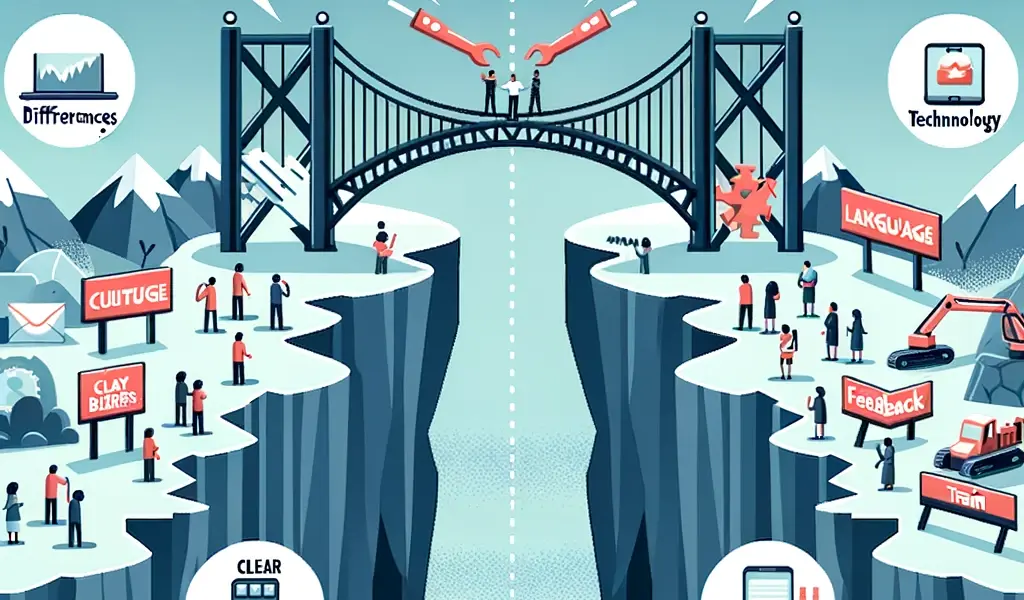Have you ever had a conversation that left you feeling frustrated and misunderstood? Miscommunication is a common occurrence in our daily lives, but have you ever stopped to wonder why it happens so frequently? In this article, we will explore the concept of systematic barriers in communication – the hidden obstacles that hinder effective exchange of information and ideas.
From cultural differences to language barriers, these roadblocks can prevent us from truly understanding one another. Join us as we delve into the fascinating world of communication barriers and discover how they shape our interactions on a personal and global scale.
Contents
Understanding Systematic Barriers
Systematic barriers refer to structured and inherent obstacles that impede effective communication. Unlike personal barriers like shyness, these are built into systems and processes.

Examples
- Hierarchical Structures: In many organizations, communication often flows top-down, limiting the voice of lower-level employees.
- Over-Reliance on Technology: Heavy dependence on emails or messaging apps can lead to misinterpretations and missed nuances.
- Language Differences: Organizations operating globally might face language barriers, leading to misunderstandings.
- Cultural Norms: Certain cultures might avoid direct confrontation or negative feedback, which can obscure the message’s intent.
Common Types of Systematic Barriers
Cultural Differences
Diverse cultures have unique communication styles, norms, and etiquettes. These differences can lead to misunderstandings when interacting with individuals from different backgrounds.
Language Barriers
This is not just about different languages, but also jargon, slang, and dialects. A word or phrase might mean something in one language or region but could have a different connotation elsewhere.
Technological Barriers
As communication increasingly relies on technology, issues like poor internet connectivity, outdated software, or incompatible devices can hinder communication.
Organizational Structures
In large organizations, hierarchical structures can sometimes prevent free flow of information, leading to information bottlenecks.
Psychological Barriers
Stress, anxiety, or other emotional states can affect an individual’s ability to communicate effectively.
Physical Disabilities
Disabilities like hearing or speech impairments can pose challenges in traditional communication settings.
Impacts of Systematic Barriers on Communication
Misunderstandings
One of the primary outcomes of these barriers is misunderstandings, leading to conflicts and inefficiencies.
Reduced Efficiency
In a business setting, these barriers can cause delays, mistakes, and redundancy, affecting productivity.
Strained Relationships
Persistent communication barriers can strain personal and professional relationships, causing mistrust and dissatisfaction.
Decreased Morale
In organizations, when employees feel they are not being heard or understood, it can lead to decreased morale and engagement.
Missed Opportunities
Effective communication can lead to collaborations, partnerships, and growth. Barriers can cause missed opportunities.
Strategies for Overcoming Systematic Barriers of Communication
Cultural Sensitivity Training
Organizations can provide training to help employees understand and respect cultural differences. This fosters a more inclusive and respectful workplace.
Clear Guidelines
Setting clear communication guidelines in professional settings helps reduce misunderstandings and ensures everyone is on the same page.
Use of Technology
Using tools like translation apps or accessibility features can help bridge communication gaps and make interactions smoother.
Feedback Mechanisms
Encouraging feedback allows organizations to identify and address communication issues quickly, leading to continuous improvement.
Flexible Organizational Structures
Promoting open communication and reducing hierarchical barriers can enhance the flow of information within the organization.
Mental Health Support
Offering mental health support can help those dealing with psychological barriers, leading to healthier and more effective communication overall.
By understanding the root causes and impacts of systematic barriers in communication, we can take proactive steps to address them. By implementing the strategies mentioned above, we can pave the way for clearer, more effective communication.
Boko Ducky has over 10 years of experience in helping individuals and organizations improve their communication skills.





